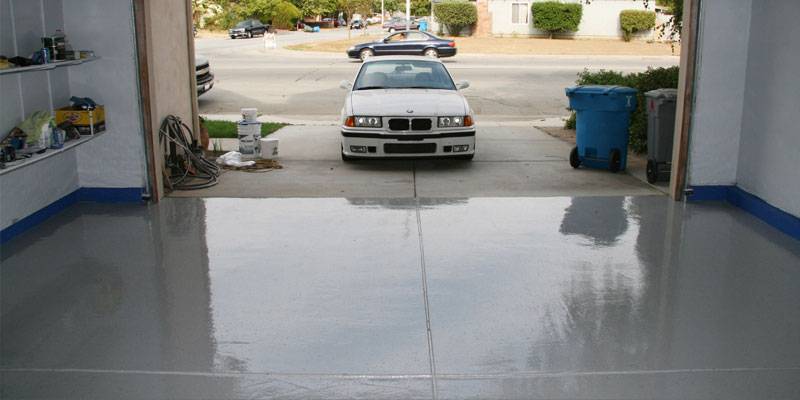Learn the Facts About Repairing Garage Epoxy

Do you have a garage with an epoxy floor coating? Over time, this type of flooring can become damaged. When that happens, you need to know how to repair it properly. Knowing the facts about garage epoxy repair will help you make the best decision for your floor. In most cases, epoxy flooring can be repaired with a simple patch. However, more severe damage may require a complete replacement. Some repairs can be done by yourself, but others are best left to the experts, and still, others may be impossible to repair. Here are some facts about repairing garage epoxy that will help you make the best decision for your floor.
Table of Contents
What is Epoxy Coating?
Epoxy coatings are a type of floor coating that is typically used in industrial and commercial settings. This type of coating is applied in a two-part process. The first part is the basecoat, which is applied to the floor. The second part is the topcoat, which is applied over the basecoat. Epoxy coatings are very durable and resistant to chemicals, oil, and grease. They are also easy to clean and maintain, making them a popular choice for garage floors. Epoxy coatings can last for many years, but they are not indestructible. Over time, they can become cracked, chipped, or scratched. When this happens, the floor will need to be repaired.
Types of Damage
There are three main types of damage that can occur to an epoxy floor: cosmetic damage, structural damage, and complete failure. Cosmetic damage includes things like scratches, chips, and stains. This type of damage can usually be repaired with a simple patch. Structural damage includes things like cracks and holes. This type of damage is often more difficult to repair and may require a complete replacement. Complete failure is when the entire floor coating comes up. This type of damage is usually not repairable and will require a complete replacement.
Repairing Your Epoxy Garage Flooring
When it comes to repairing your epoxy floor, you have three options: patching, resurfacing, and replacement. Let’s take a look at each option in more detail.
Patching
Patching is the simplest and most common type of repair. Patching involves applying a new layer of epoxy over the damaged area. This will cover up the damage and leave your floor looking good as new. In most cases, patching is all that is needed to repair minor damage. A simple patch can make all the difference, and it is often the best option for repairing your floor.
Resurfacing
Resurfacing is a more extensive type of repair. Resurfacing involves removing the old layer of epoxy and applying a new one. This is usually done when there is significant damage to the floor. Resurfacing can be a difficult and time-consuming process, so it is best left to the experts. If your floor has extensive damage, resurfacing may be the only option.
Replacement
Replacement is the most extreme type of repair. Replacement involves removing the entire floor and starting from scratch. This is usually only done when the floor is beyond repair. In most cases, replacement is not necessary, but it may be the only option if your floor is severely damaged.
When to Call a Professional
There are some repairs that are best left to the professionals. If you are not sure how to repair your floor, it is always best to call a professional. They will be able to assess the damage and recommend the best course of action. In some cases, the damage may be too severe for you to repair on your own. In these cases, it is best to call a professional. No matter what type of repair you need, a professional will be able to get the job done right and put your mind at ease.
What’s The Cost of Repairing Epoxy Floors?
The cost of repairing your floor will depend on the type of damage and the repair that is needed. In most cases, patching is the cheapest option. Resurfacing and replacement are more expensive options, but they may be necessary in some cases. If you are not sure what to do, it is always best to call a professional. They will be able to assess the damage and recommend the best course of action. The cost of the repair will also depend on the size of the damaged area. The larger the area, the more expensive the repair will be.
There are so many factors and unknowns when it comes to repairing an epoxy floor, and it’s best to consult with a professional. They will be able to assess the damage and recommend the best course of action. Knowing and understanding the type of damage you have and the repair options available to you will put you in a better position to make a decision. Epoxy is one of the leading flooring materials on the market, and it is known for its durability and long-lasting results. Keeping up with the maintenance of your epoxy floor is the best way to ensure that it will withstand the test of time.
